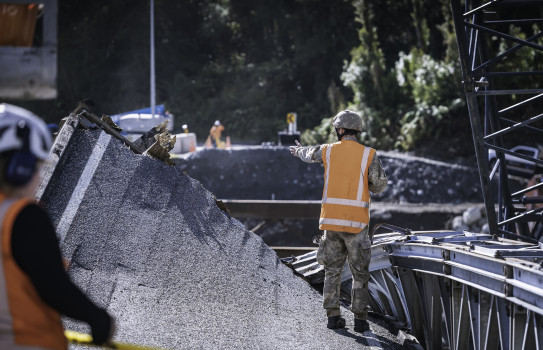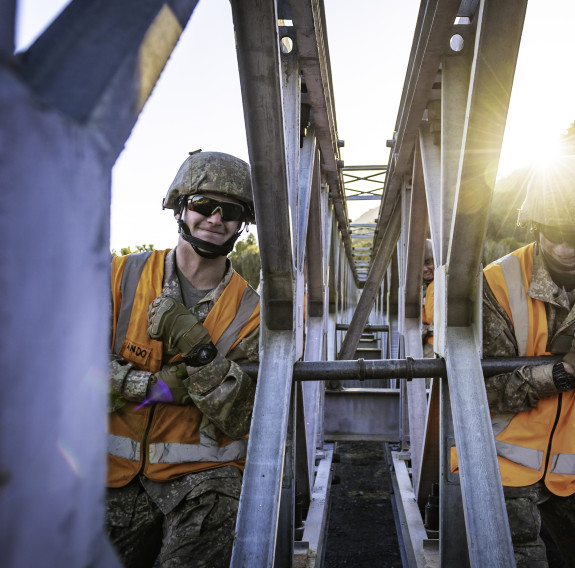Waiho Bridge
A community reconnected
The massive floods that surged through South Westland in 2019 destroyed a vital link for the local populace— the Waiho Bridge. The bridge was a key piece of infrastructure, an important link in the South Island, and crucial for businesses in South Westland who needed it to get goods both in and out of the area.
The New Zealand Transport Agency’s (NZTA) contracted Bailey bridge installation expert Downer requested the NZDF’s support for the reconstruction of the seven-span Bailey bridge that crosses Waiho River. This portable, pre-fabricated truss bridge was developed by the British for military use during the Second World War.
Lieutenant Colonel Terry McDonald, who was the Commanding Officer of the 2nd Engineer Regiment at the time, said 18 personnel from the unit worked with the NZTA and Downer New Zealand to replace the bridge.
It is great to contribute our professional expertise to support government agencies responding to communities that need our assistance.”
Lieutenant Colonel Terry McDonald

Combat Engineers from Burnham and Linton assist Downer Construction in rebuilding the MSR bridge that leads to Fox Glacier from the town centre.
The new 170-metre Waiho Bridge is one of the longest Bailey bridges Army engineers have been involved in building since the Second World War.
Transport Agency System Manager Pete Connors said getting the NZDF’s help to assemble the spans on the bridge ensured it was able to be launched from the south side of the Waiho River quickly.
We know how important a link it is in the South Island and for the businesses in South Westland and the Army engineers played a vital part in the restoration of a key piece of infrastructure.
Pete Connors, Transport Agency System Manager
Westland authorities said the Waiho Bridge provided vital access to the region and its loss had adversely affected tourism on the West Coast and in South Westland.
